iWay Adapter (com.ibi.agents.XDAdapterAgent)
|
Topics: |
Syntax:
com.ibi.agents.XDAdapterAgent
iIT Service Object:
defined by adapter
Description:
This service is used to call a preconfigured iWay adapter.
Note: This service should be used as adapters are defined. To use this service, an adapter must first be configured using iWay Explorer.
Parameters:
|
Parameter |
Description |
|---|---|
|
iBSP URL * |
Select an available iBSP URL from the drop-down list or type a URL using the following format: http://host:port where:
The iBSP URL allows you to access targets defined in the iBSP repository. |
|
Adapter * |
The name of the configured adapter you are working with, for example, RDBMS. |
|
Target * |
The name of the user-defined target that is associated with the configured adapter, for example, Oracle11. |
|
Class |
The name of the Java class that implements the adapter associated with the service. This field is populated by iWay Service Manager when you create the Adapter service and should not be modified. |
|
Descriptor |
Key used by iWay Service Manager to locate the adapter target parameters to associate with the service. This field is populated by iWay Service Manager when you create the Adapter service and should not be modified. |
|
Keys |
Key used by iWay Service Manager to locate the adapter persistence keys associated with the service. This field is populated by iWay Service Manager when you create the Adapter service and should not be modified. |
|
Persist Connection |
If enabled, the adapter connection is reused between execution attempts. Select one of the following options from the drop-down list:
|
|
Promote OnFailure |
If set to false, failure edges, such as fail_connect, are promoted to OnError. This is used for upward compatibility purposes. |
|
Emit OnFailure |
If the Promote OnFailure parameter is set to false, this parameter determines the type of document to emit on failures. Select one of the following options from the drop-down list:
|
Edges:
The edges returned are listed in the following table.
|
Edge |
Description |
|---|---|
|
success |
Successful operation of the adapter. |
|
fail_operation |
The adapter failed and did not report the direct cause. |
|
fail_security |
The adapter has returned a security violation. |
|
fail_partner |
The adapter reports that it cannot reach the needed external system or that system has returned an error. |
|
cancelled |
The operation has been cancelled due to a timeout or other cause. |
Example:
It is recommended to use an iWay Adapter as a Service object for connection with adapters rather than this service. For more information, see the Configuring the Adapter in iWay Designer chapter in the iWay adapter documentation that corresponds to the specific adapter you are trying to add or define (for example, iWay XML Adapter for RDBMS User's Guide).
Using iWay Functional Language With Adapters
A frequent requirement is to use iFL to adjust the target of an adapter, for example, to change the URL of a server to be reached. The example in this section discusses that issue.
Assume two MS SQL Server databases, smd1 and smd2, each of which contains a table named testtable. The two tables have the same structure, but contain different data. The application designer wants to create a flow using the RDBMS adapter that executes the SQL statement, select * from testable, against either the table in smd1 or the one in smd2, depending on the input document.
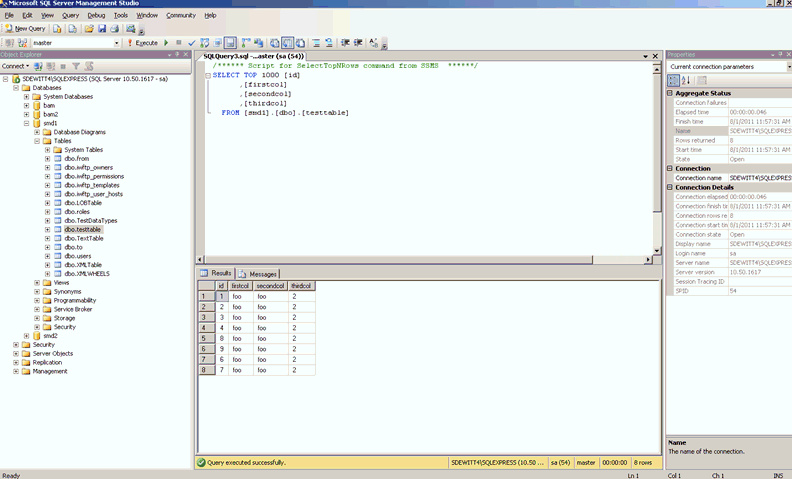
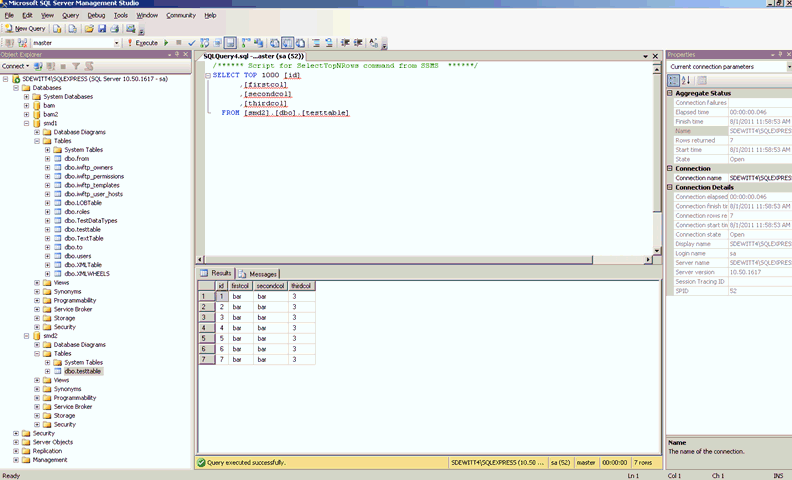
Using Application Explorer, create an RDBMS adapter target pointing at either of the two databases, as shown in the following image.
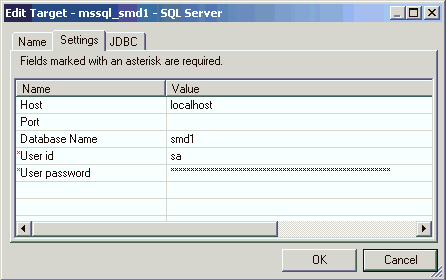
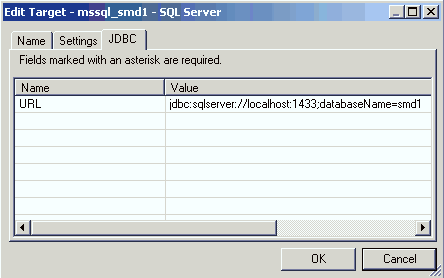
In the target, create the statement, which can be named stmt1.
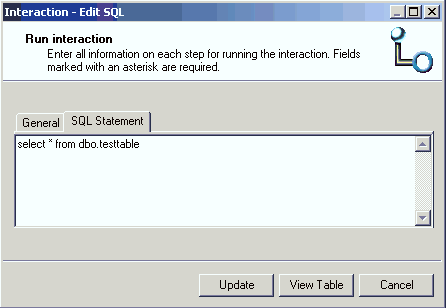
Now, add the adapter to the iSM registry.
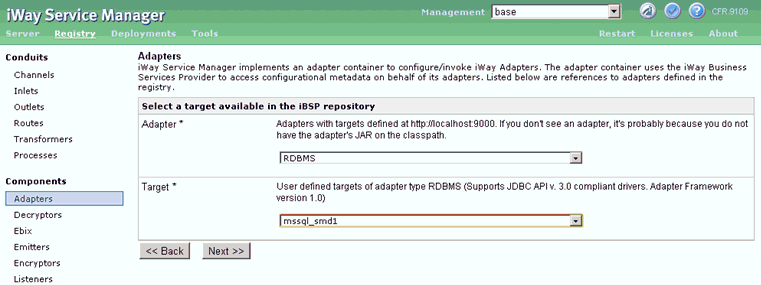
Edit the parameter values imported from the target to use iFL expressions.
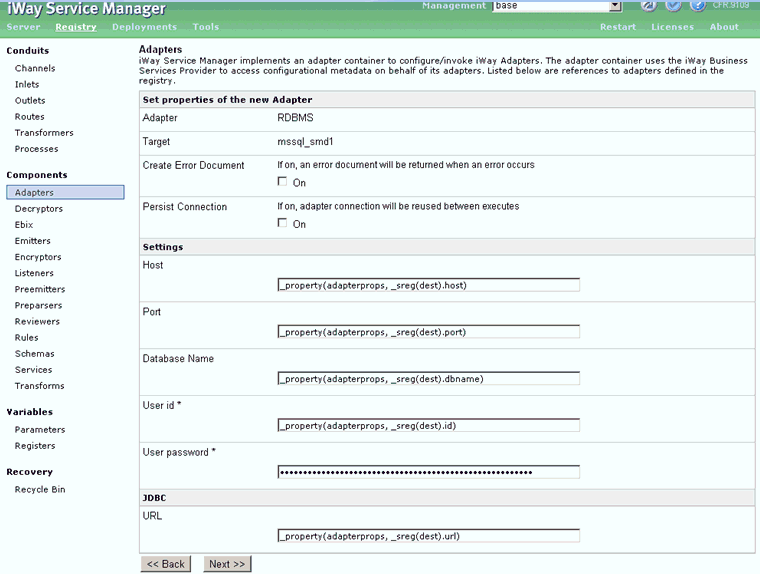
Note that the expression combines the _property and _sreg functions. Since there are several connection parameters that are required to be set dynamically for each destination, you can store the values you need in a properties file using property names that follow a naming convention. Thus, if you can set the dest special register, then you can use the value of this register to get the values that are required to make a connection. For this example, the properties file has the following structure:
smd1.host=localhost smd1.port=1433 smd1.dbname=smd1 smd1.id=sa smd1.password=harrison smd1.url=jdbc:sqlserver://localhost:1433;databaseName=smd1 smd2.host=sdewitt4 smd2.port=1433 smd2.dbname=smd2 smd2.id=sa smd2.password=harrison smd2.url=jdbc:sqlserver://localhost:1433;databaseName=smd2
Save the adapter in the registry as DynamicRDBMS.
Other ways to store specific information includes the iWay Trading Profile Manager or another table reachable using the _jdbc() function call.
Now you need to create a flow that uses the DynamicRDBMS adapter. Since the adapter is defined in the registry, you must work in a registry based project. To keep things simple, the flow will contain two components. The XDSREGAgent service will set the dest special register to either smd1 or smd2, depending on the value of an attribute in the input document. To keep things simple, you will just add this attribute to the standard RDBMS adapter input message, so the value of dest can be:
_xpath(/AdapterParams/@dest)
The next step is to add the DynamicRDBMS adapter.
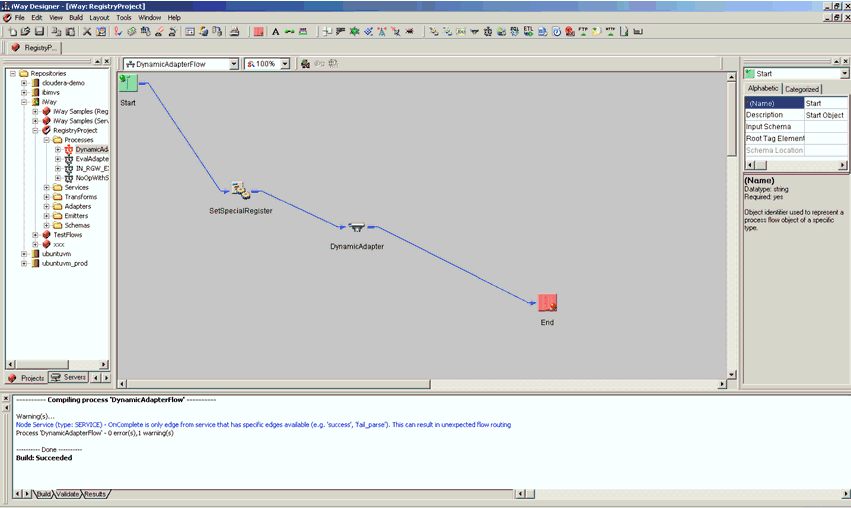
Now, you can test the flow using the following input:
<AdapterParams location="RDBMS/Statements/stmt1" dest="smd2"/>
Since the dest attribute is set to smd2, you should use the correct properties to connect to the smd2 database.
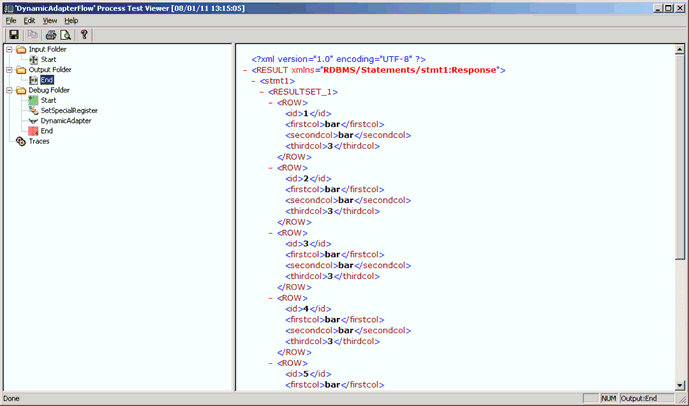
Finally, you can retest the flow using the following input:
<AdapterParams location="RDBMS/Statements/stmt1" dest="smd1"/>
Now, the dest attribute is smd1, which means the adapter should connect to the smd1 database and retrieve different data.
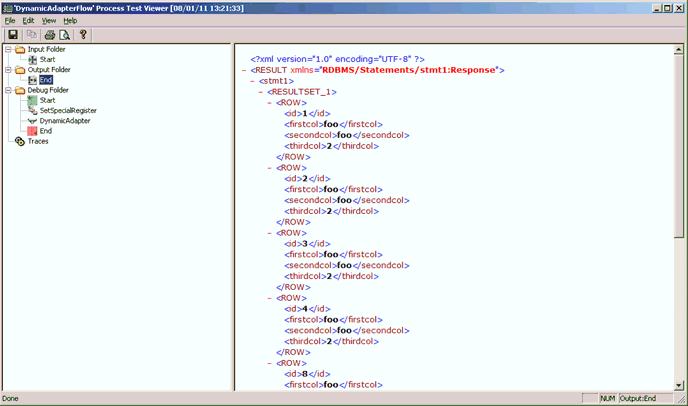
Notice that all the bar values from the first result have changed to foo.